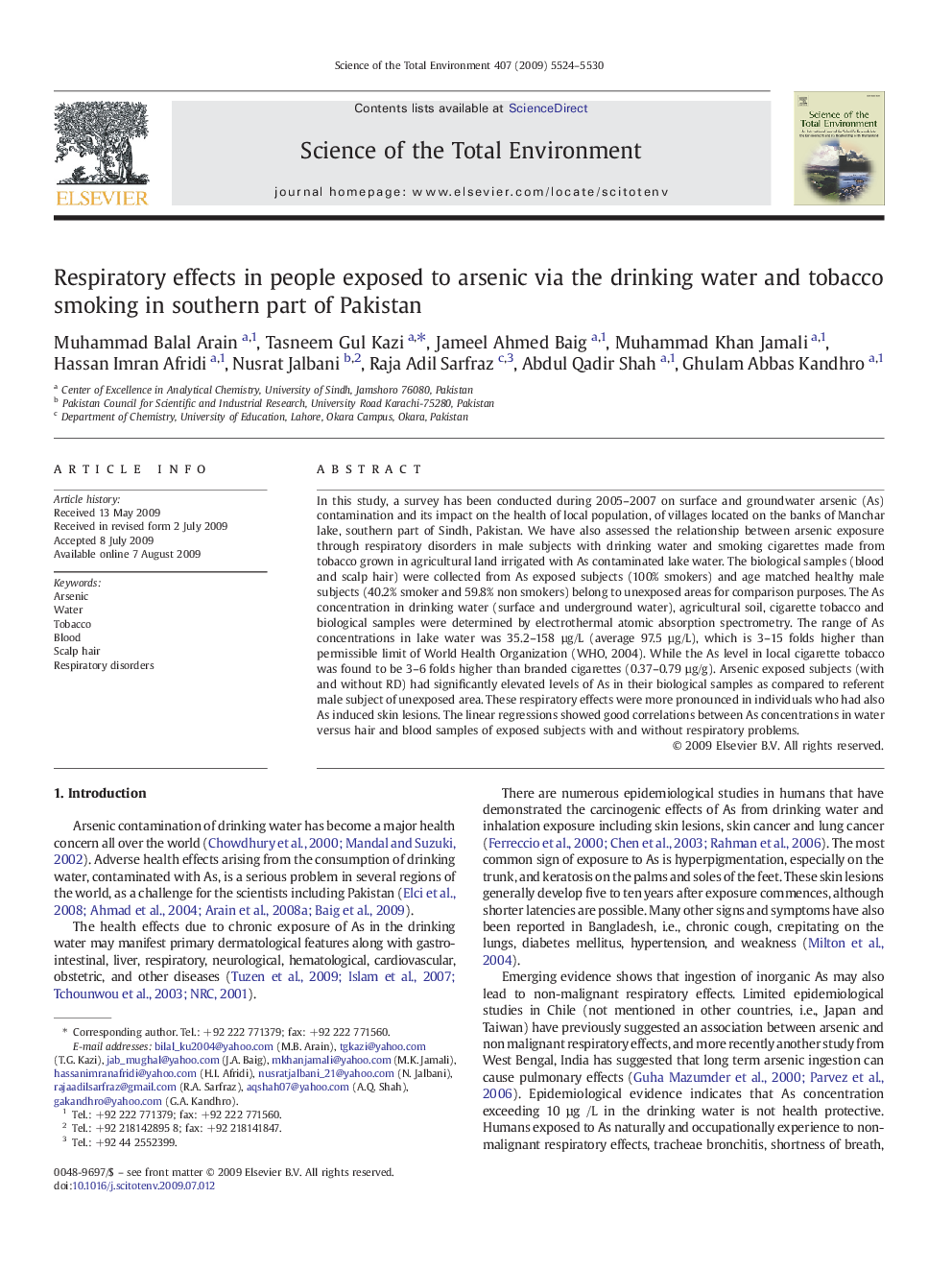| Article ID | Journal | Published Year | Pages | File Type |
|---|---|---|---|---|
| 4431645 | Science of The Total Environment | 2009 | 7 Pages |
In this study, a survey has been conducted during 2005–2007 on surface and groundwater arsenic (As) contamination and its impact on the health of local population, of villages located on the banks of Manchar lake, southern part of Sindh, Pakistan. We have also assessed the relationship between arsenic exposure through respiratory disorders in male subjects with drinking water and smoking cigarettes made from tobacco grown in agricultural land irrigated with As contaminated lake water. The biological samples (blood and scalp hair) were collected from As exposed subjects (100% smokers) and age matched healthy male subjects (40.2% smoker and 59.8% non smokers) belong to unexposed areas for comparison purposes. The As concentration in drinking water (surface and underground water), agricultural soil, cigarette tobacco and biological samples were determined by electrothermal atomic absorption spectrometry. The range of As concentrations in lake water was 35.2–158 µg/L (average 97.5 µg/L), which is 3–15 folds higher than permissible limit of World Health Organization (WHO, 2004). While the As level in local cigarette tobacco was found to be 3–6 folds higher than branded cigarettes (0.37–0.79 µg/g). Arsenic exposed subjects (with and without RD) had significantly elevated levels of As in their biological samples as compared to referent male subject of unexposed area. These respiratory effects were more pronounced in individuals who had also As induced skin lesions. The linear regressions showed good correlations between As concentrations in water versus hair and blood samples of exposed subjects with and without respiratory problems.
